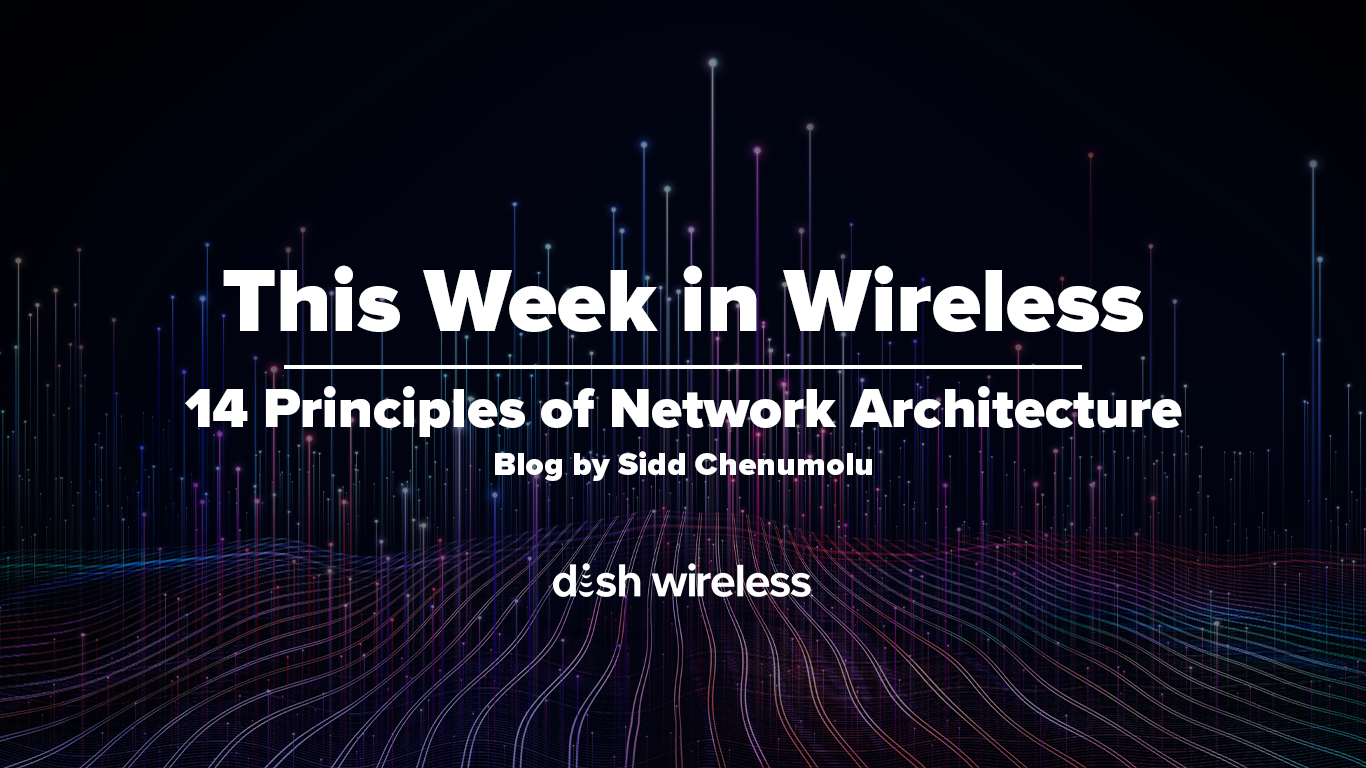This Week in Wireless: 14 Principles of Network Architecture

June 7, 2022
By Sidd Chenumolu, Vice President, Network Technology, DISH Wireless
DISH network architecture leverages three main pillars: Open RAN, Standalone and Cloud-Native. A network that is Cloud-Native allows disruption and innovation at faster speeds and lower cost than legacy systems reliant on non-standalone architecture.
DISH Wireless built America’s First Smart Network™ by using Cloud-Native Principles that apply to all of our network functions and systems.
What is “Cloud-Native”? At first glance, it may seem complex or hard to understand, but looking at the fundamentals shows how important this approach is to achieving our goal of making an adaptable, scalable, secure and powerful product.
DISH's 14 Cloud-Native Principles
1. Cloud-Native: The Network Functions should be Containerized (CNF) and based on micro‐service.
2. Stateless: The Network Function should be stateless. If stateless implementation is unavoidable, it must be concentrated in as few containers as possible.
3. Automation: CNFs should be created and terminated by the CNF Manager.
4. No Scripts: Configuration changes should be managed via scalable tools such as Operators, NetConf, or Rest APIs.
5. Observability: CNFs should use industry-leading CNCF monitoring and logging tools such as Prometheus, Fluentd etc.
6. Reliability: The system should be able to detect, signal and react to POD failures or degradation of services in real-time.
7. Kubernetes: CNFs should work on the latest K8S version supported by the Platform.
8. Life Cycle Management: All software management should be zero-touch via CI/CD pipelines without any manual approvals.
9. Downtime: CNF shall support in‐line POD upgrades, without downtime and no service performance degradation.
10. Scalable: Using zero-touch process, the system shall support addition and configuration of additional infrastructure nodes. CNFs should avoid resource pinning at all times, unless explicitly needed for performance.
11. Data Lake: The system shall integrate with an automated tracking system like Jira for all bugs and with Data Lake to manage all test results, events and logs.
12. Nodal Testing: Each CNF should be accompanied by test cases to validate the functionality and load test it using automated tools.
13. Software Delivery: CNFs package should be available in CSAR format with all associated manifests and artifacts, and should follow best practices such as no hardcoding of the IP addresses.
14. Hybrid Multi-Cloud: The CNFs should be portable to any cloud environment.
These Cloud-Native Principles, combined with our fully open RAN and standalone infrastructure, enable DISH Wireless to innovate at the speed of cloud and support new and emerging markets.
